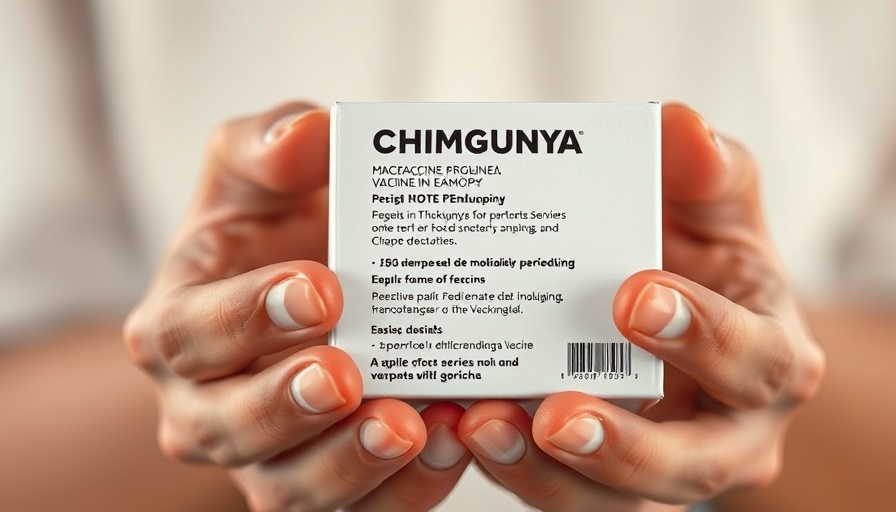
Understanding the Chikungunya Vaccine: A New Horizon in Preventative Health
In an important development for global health, the European Medicines Agency (EMA) recently lifted restrictions on the chikungunya vaccine, marking a significant step in the fight against this debilitating illness. Chikungunya fever has emerged as a pressing public health concern in tropical regions, characterized by symptoms such as fever, joint pain, and fatigue. The EMA's decision is rooted in new evidence demonstrating the vaccine's safety and effectiveness, particularly for populations at higher risk.
Why Chikungunya Matters: The Disease's Impact
Chikungunya virus, transmitted by mosquitoes, has experienced a resurgence in recent years, affecting thousands across the globe. Originally identified in Tanzania in 1952, it has spread to areas in Asia, Africa, and the Americas, causing significant economic and healthcare burdens. With no specific antiviral treatment available, prevention through vaccination is vital, making the EMA's decision noteworthy. Health experts indicate that as urbanization expands, the incidence of chikungunya is likely to rise, underscoring the urgency for effective control measures.
Benefits of the Chikungunya Vaccine: What You Need to Know
The newly authorized chikungunya vaccine presents several benefits for both individuals and public health systems. Enhanced immunity could reduce cases of severe disease and related medical complications. Importantly, the vaccine could also alleviate healthcare costs associated with managing chikungunya outbreaks. By preventing the disease, public health initiatives can allocate resources more effectively, focusing on education and awareness programs that emphasize mosquito control and personal protection measures.
Cautions and Considerations: A Balanced Approach
While the EMA's favorable ruling is promising, experts urge caution. The vaccine is not yet universally recommended for everyone, especially for individuals with allergies or specific health conditions. Monitoring potential adverse effects, understanding vaccine efficacy, and ensuring public awareness are critical steps in managing the rollout to minimize risks. Additionally, balancing vaccination with other preventative strategies, such as mosquito control, is essential for a holistic approach to reducing chikungunya transmission.
The Future of Vaccines and Disease Prevention
The approval and use of the chikungunya vaccine can set a precedent for the development of similar vaccines against other mosquito-borne diseases like dengue and Zika. With ongoing research and innovations in biotechnology, the potential for combining multiple vaccines into a single treatment may dramatically enhance public health outcomes in the future. In a world increasingly impacted by climate change and evolving disease patterns, the importance of vaccines cannot be overstated.
As communities await more information about availability and implementation, staying informed about advances in disease prevention and vaccines can empower individuals to make sound health choices.
 Add Row
Add Row  Add
Add 




Write A Comment